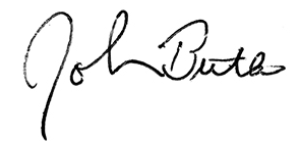- The “Oil Axis” of Saudi Arabia, Russia and Iran met last week
- Reports indicate they discussed how to evade US sanctions
- Did they also discuss using the Russian rouble to trade?
In part one, we noted the gathering of the Saudi-Russia-Iran “Oil Axis” in Riyadh last week and speculated whether the presence of Russian Central Bank President Elvira Nabiullina might have been due to trade in the Russian rouble being on the agenda.
We know that US sanctions imposed on Russia due to the war in Ukraine were discussed, including how to potentially evade them and continue trading. US sanctions against Iran have been in place for decades. But one obvious way to evade US sanctions is to avoid use of the US dollar in trade.
Hence, Ms Nabiullina’s presence is a clear indication that this possibility is on the table for discussion. Could it be that all three countries are looking for a dollar alternative? Could the rouble be on the short list?
Possibly. But the problem here is that the rouble is not fully fungible in the international foreign exchange markets. That’s a big drawback. This is one reason why, notwithstanding its huge economy, most foreign trade with China is conducted in US dollars, not renminbi.
But if the rouble isn’t the solution to the sanctions problem, what is?
Back in 2014, when the Ukranian government was overthrown, Russia annexed Crimea and two of the Donbass republics revolted against Kyiv, the US imposed a range of sanctions against Russia intended to cause economic hardship.
That year, I wrote an article discussing how Russia could evade sanctions and continue trading with other countries, if not the US. It was titled, “As the sanctions war heats up, will Putin play his Gold Card?”
Originally posted to Financialsense.com, the article was subsequently picked up by a number of financial websites and I estimate that it was read hundreds of thousands of times. It was even translated into several foreign languages, including Chinese.
What about the article might have sparked such interest around the world? Perhaps, the following excerpt provides a clue:
One crucial aspect of Russia’s dependence on the West is the global use of the U.S. dollar as the primary international transaction and reserve currency. It is thus no surprise that the recent Russian energy deal with China—involving the construction of a large gas pipeline between the two countries—is to be financed and transacted in the Chinese yuan rather than the dollar.
Not only Russia, but the BRICS in general have regularly expressed their dissatisfaction with the dollar-centric global monetary conventions, including the Bretton-Woods legacy institutions of the IMF and the World Bank. Hence the BRICS have set about building their own parallel institutions and have signed a number of bilateral currency-swap deals with each other and non-BRICS trading partners in order to reduce dollar dependence. While all these initiatives nudge the BRICS and, by implication, the global economy generally, away from the dollar, the process is slow and, absent an international monetary crisis, is likely to take years.
For Russia, however, the need to shore up the economy and the currency is exigent. It cannot wait for the gradual evolution of the international monetary system to reduce the impact of sanctions. So what else might Russia do in the near-term?
A Golden Rouble?
One intriguing possibility is one which Russia has, in fact, contemplated before: Backing the currency with Russia’s gold reserves. In the late 1980s, as the Soviet Union was breaking up, the rouble was in free-fall and inflation was soaring. Russia had essentially zero access to global capital markets and relied on oil exports for hard currency with which to trade with other nations.
In 1989, Premier Gorbachev invited two prominent U.S. economists to Russia, where they met with senior economic policy officials and recommended precisely this as the best way to stabilize the rouble. One of the two was former Fed governor Wayne Angell; the other, Jude Wanniski of ‘supply-side’ economic fame. In 1998, Mr Wanniski wrote that he “became alarmed about the financial collapse in Russia,” and decided to “write a piece on how to fix Russia right away, before it was in complete chaos.” In the Wall Street Journal editorial that followed, Mr Wanniski explained the longer history of the gold-backed rouble idea.
This is how Alexander Hamilton solved the financial crisis that faced the administration of George Washington in 1791. America’s first Treasury Secretary fixed the dollar to gold and promised creditors they would be paid all they were owed at par, with interest. In 1947, West German Finance Minister Ludwig Erhard ended a similar financial crisis by pegging the Deutsche mark to gold.
At these times, neither the U.S. nor the German government had any gold. The gold promise worked because their own people understood that their governments were not insolvent, but simply faced a short-term cash crisis. In the same way, the Russian state today has small liabilities, perhaps $200 billion, compared to the assets it possesses, which easily amount to $10 trillion. The state, after all, owns almost everything in 11 time zones, which it acquired in the 1917 revolution. All of these assets can be used to back up the exchange rate by converting them at the ruble price of gold.
The situation back in 1989 or 1998 was, thus, similar to if even more serious than that faced by Russia today. But what if the sanctions war escalates? Things could get worse. Is Mr Putin or his senior advisers aware of what was contemplated above? That gold could provide a workable solution to stabilise the currency and economy? A distinct possibility. How likely is it that they will make this move?
Well, let’s consider the international context. Were Russia to back the rouble with gold today, this would be a far more credible policy than it could ever have been back in 1989 or 1998, when Russia’s government was less stable and less popular, and Russia’s economy was less well-integrated with those of China, Germany and other major economies. Moreover, in recent years Russia has amassed a huge amount of gold reserves. Indeed, at current market prices, Russia’s gold reserves would back a whopping 27% of the narrow rouble money supply! That is a high ratio, far in excess of any other major country and also in excess of the U.S. Fed’s original stipulated gold coverage minimum. Moreover, Russia is a large net exporter, notwithstanding the sanctions, so Russia’s gold reserves, by implication, are likely to continue to grow, rather than decline.
This credibility is also reinforced by the Russian economy’s relatively low debt. Without a large debt to service, there is little temptation or need to inflate the currency. Indeed, Russian interest rates are currently around 10%, implying a generous relative return on rouble cash balances. Imagine the rouble was to be convertible into gold, and rouble interest rates remained at 10%. This implies a nearly risk-free arbitrage of 10% between the rouble and gold. You can bet than a large number of international investors would quickly sell some gold, dollars, or other currencies, and acquire some roubles, pocketing the hefty interest rate differential. That would support the rouble, possibly leading to a large re-appreciation vis-à-vis the dollar and other currencies left unbacked by gold. Rouble interest rates could then decline, perhaps to quite low levels, where equilibrium would eventually be reached. It could have worked in 1989, or 1998. It is far more likely to work today.
Ms Nabiullina is certainly aware of Russia’s colourful monetary history and that gold has been used, at times, to shore up confidence in the rouble. If the Saudis, or Iranians, or anyone else for that matter is looking for a credible way to trade with Russia without using the US dollar, could the solution be a gold-backed rouble?
What about OPEC nations generally? Several of which are not on particularly friendly terms with the US. None of them have imposed sanctions on Russia. On the contrary, Iran and Venezuela have had sanctions imposed on them. Might they welcome the opportunity to trade in a gold-backed currency with fellow oil-exporter Russia?
There is no way to know. But a gold-backed rouble would go a long way to solving the trade challenges that many countries currently have, given how aggressive the US has been in imposing sanctions in recent years. It could set an example for others who could do the same with their own currencies.
Now, most countries have nowhere near as much gold as Russia. But if you’re a net exporter, then to the extent that your external trade takes place in gold-backed currencies, the reserves you accumulate will be indirect claims on gold.
In this way, countries could wean their way off the current, dollar-centric international monetary system towards one more reliant on gold-backed currencies. There might be multiple such currencies in circulation, not merely the Russian rouble, but if they were all gold-backed, then they would be somewhat fungible with one another.
This is roughly how the classical gold standard worked in the 19th and early 20th centuries. Countries had their own currencies but as these were all gold-backed, international financial friction was minimal. Trade and investment soared. Economic growth was far higher than it is today.
Of course, I have no idea what specifically was discussed in Riyadh last week. It might seem an odd place to discuss the possible re-introduction of gold into the international monetary system. But if the emerging Saudi-Russia-Iran “Oil Axis” is going to begin asserting its potential economic and financial power on the world stage, it is as appropriate a place to start as any.

John Butler
Investment Director, Fortune & Freedom
PS With a new year fast approaching, it’s a good time to plan ahead for the coming year – and I’d like to help you do just that, by sharing my own personal investing strategy that has the potential to grow your wealth for next year and beyond. Join me here to find out more.
[Capital at risk.]



